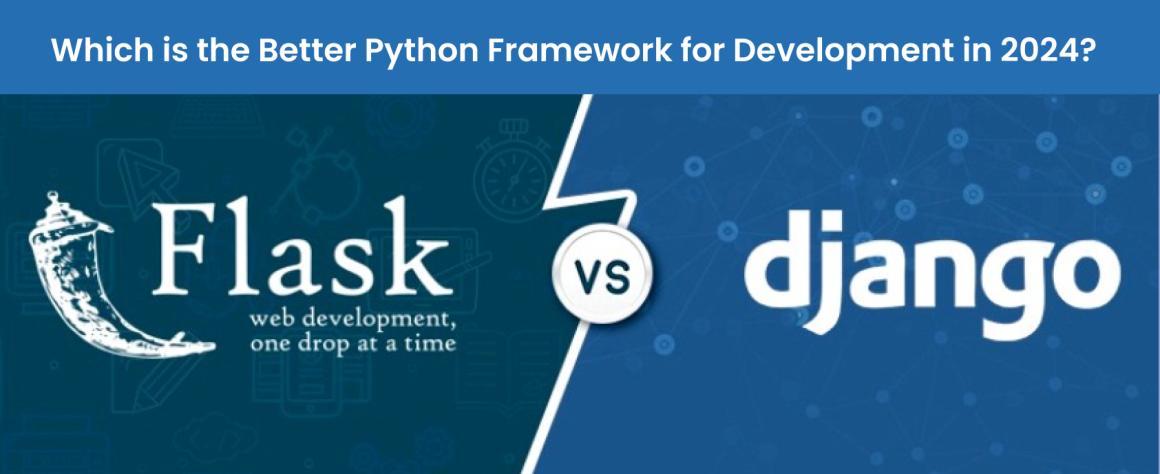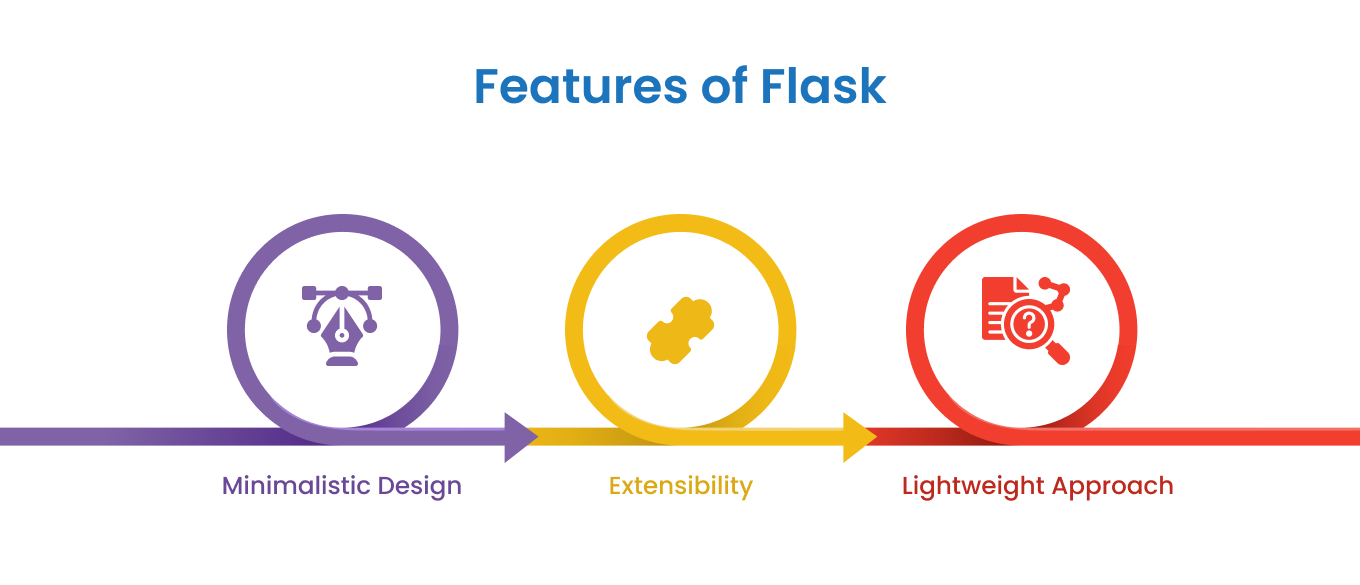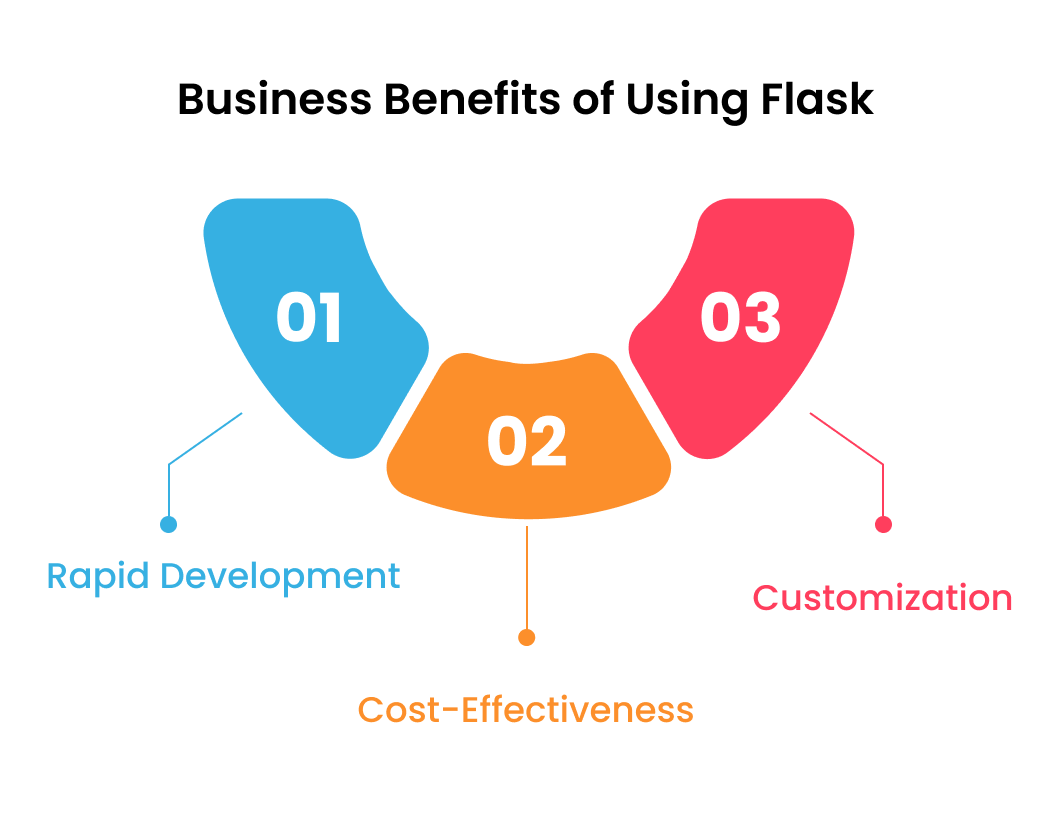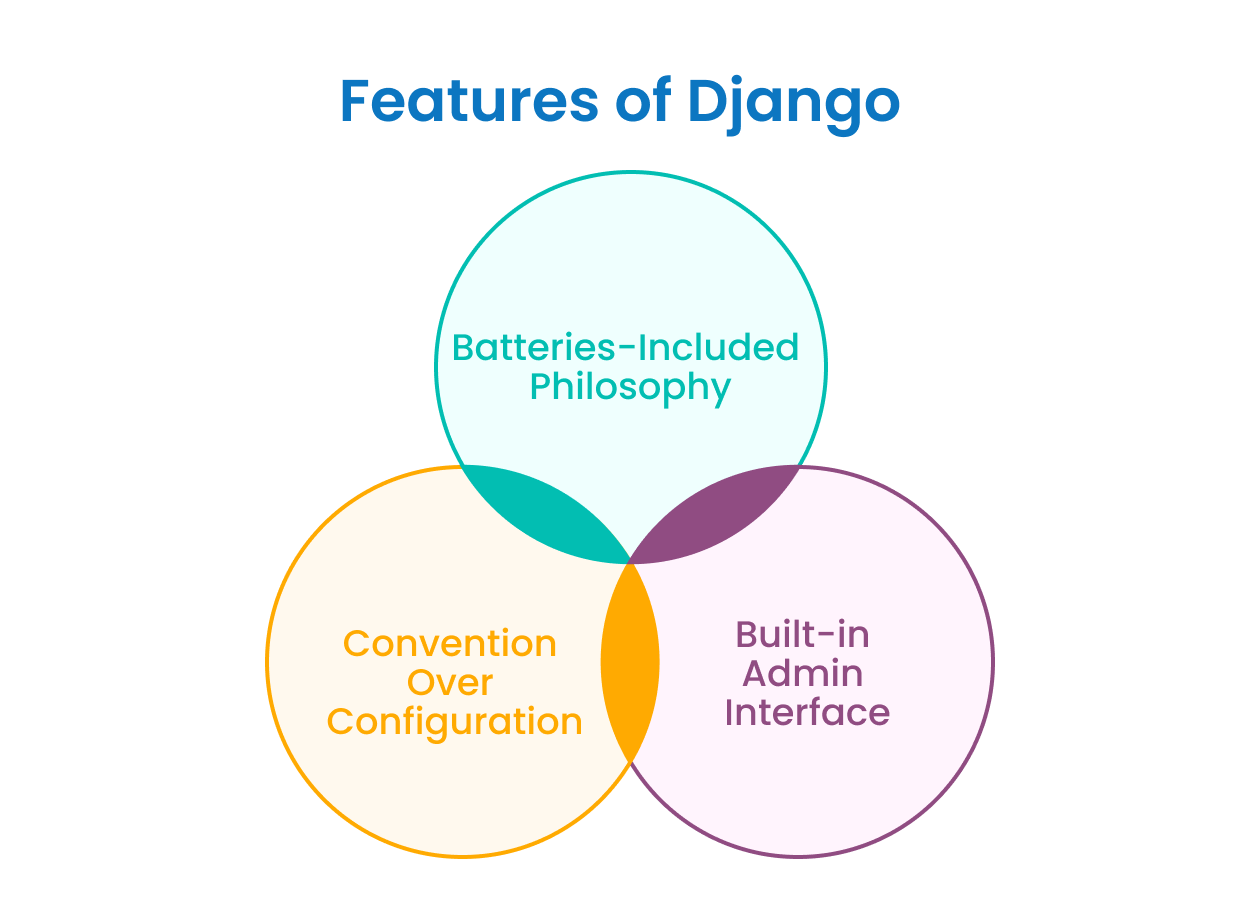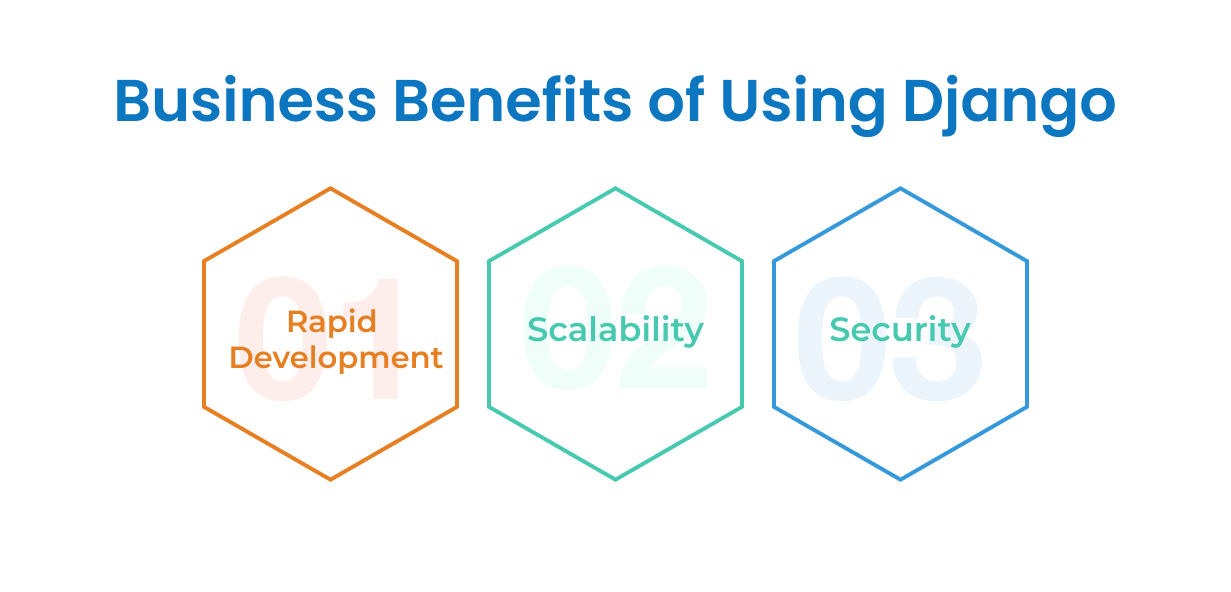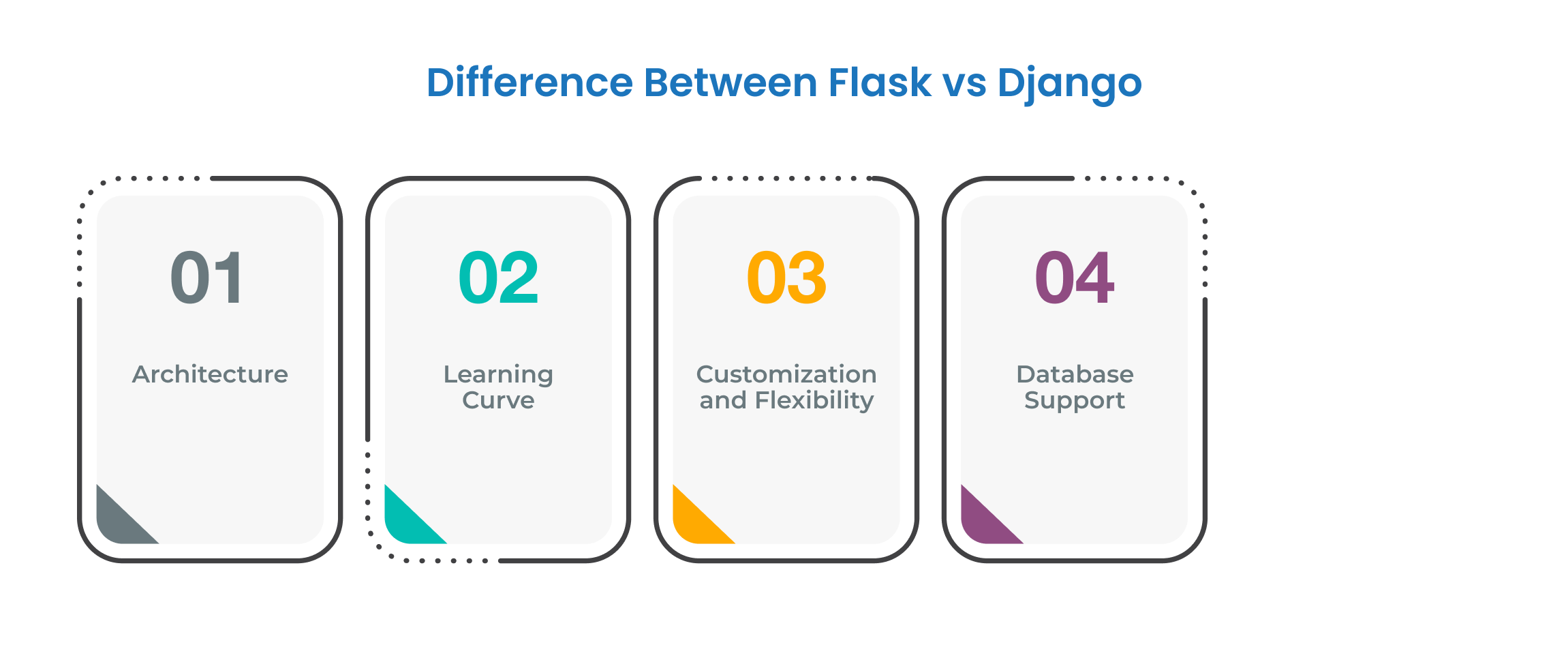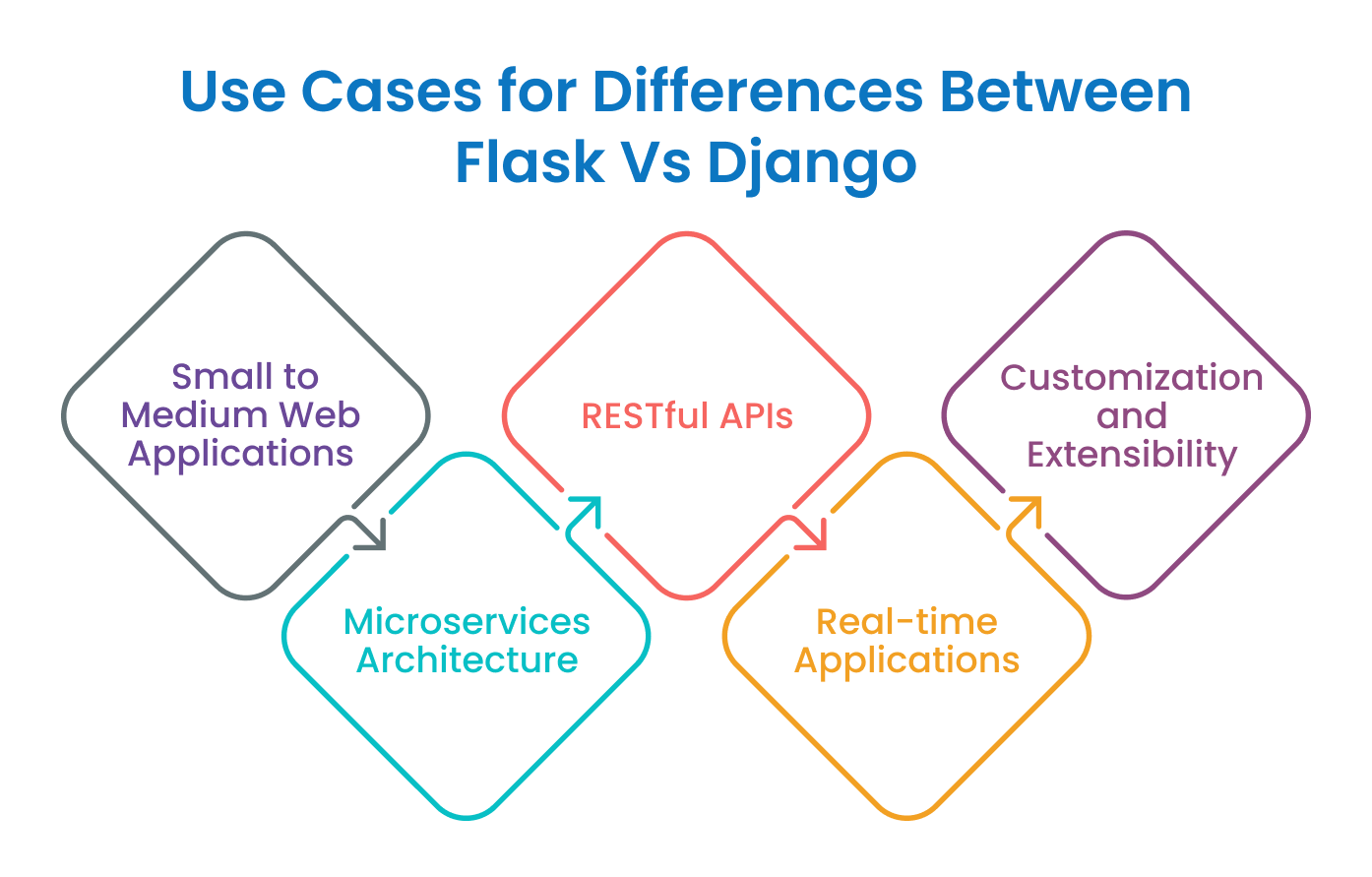The Python programming language has become a key addition for business groups to build quality and futuristic applications. It is integrated with multiple web frameworks helping web developers to build engaging web applications. The web developer has the liberty to make a smart choice when multiple options are available for development. Among many popular choices, Flask vs Django is the talking point as both are often compared for better selection.
When compared it has been observed that both share a few similarities too. Each framework is powered by its unique features addressing project requirements. In this blog post, we will see how you can select the right framework for building an application that drives desired business results. Let’s embark on a journey to explore every aspect of these frameworks and identify which holds the upper hand in the rapidly growing world of Python web development.
Introduction of Flask
Flask is a powerful Python framework representing simplicity and flexibility for web developers. As a lightweight framework, Flask web development is focused on minimalism part, offering developers proper tools to build web applications delivering efficient outcomes. The presence of modular design architecture empowers developers to meet precise needs within the application development, without adding unnecessary complexities.
Features of Flask
Minimalistic Design
This feature provides developers with a clean platform to build upon, and eliminates unnecessary troubles or rigid practice. This minimalist design boosts creativity and empowers developers to create applications with complete precision and simplicity.
Extensibility
Being a minimalist design, Flask has a vivid ecosystem of extensions and plugins helping improve application functionality. From integrating authentication mechanisms to providing database support, or RESTful API, the web framework ensures that developers have the relevant tools to serve diverse project needs.
Lightweight Approach
To manage resources and keep optimized performance within the application requires a lightweight footprint. By reducing overhead and focusing on key functionality, the Flask web framework enables web developers to build quick and responsive web applications for engagement.
Business Benefits of Using Flask
Rapid Development
Every business group needs rapid development to reach its target audience and grow sales. Having Flask for web app development ensures simplicity and flexibility, allowing businesses to simply transform ideas into feature-rich web applications. The presence of the minimalist design and intuitive API lowers development overhead, enabling developers to quickly deliver value.
Cost-Effectiveness
Cost is an important factor in focusing on new initiatives. Investing in Flask web development ensures lightweight architecture and an extensive ecosystem. Here you get open-source extensions that reduce operational costs. The minimalistic design approach minimizes overhead and boosts outcomes, ending in leaner, and budget-friendly solutions.
Customization
The presence of modular design and extensible architecture of the Flask Python framework empowers businesses to easily revamp web applications with precision. No matter what is your requirement from tailoring user interfaces, adding advanced features, or integrating third-party services, Flask has the flexibility to serve unique objectives.
Introduction of Django
Django is another Python-based framework serving web development. It is a high-level web framework helping rapid web development with efficiency. Getting features of multiple old frameworks including CherryPy, Zope, and Plone, the framework is known to offer better performance. Developers love Django for standard functionalities with minimal interference of systems, and protocols. Agile development aims to provide quality with rapid feature addition and efficiency. Django can perform basic development functions including site maps, content organization, and more. The whole objective is focused on finishing the application as quickly as possible.
Features of Django
Batteries-Included Philosophy
This feature named “batteries-included” philosophy provides developers with a comprehensive set of tools and components. Ranging from an ORM (Object-Relational Mapping) system to the admin interface, Django involves multiple features resolving web development challenges.
Convention Over Configuration
Another feature to keep a check on Django web development is the “Don’t Repeat Yourself” (DRY) and “Convention Over Configuration” (CoC) principles. This lowers the boilerplate code and promotes code reuse with proper maintainability. By following standardized conventions and patterns, Django streamlines development and fosters project consistency.
Built-in Admin Interface
One of the standout features of Django to keep a check is the built-in admin interface. Here developers have the liberty of using a powerful tool to manage database records, user authentication, and other admin tasks. The presence of a predefined admin interface offers a user-friendly interface to carry out CRUD (Create, Read, Update, Delete) operations without requiring custom code.
Business Benefits of Using Django
Rapid Development
The availability of the comprehensive feature set and other built-in components speed up the development work. This allows business groups to release web applications at a faster rate into the market. Developers have access to a preconfigured environment and standardized tools, Django framework for Python ensures setup time is minimal and even reduces development work.
Scalability
Django’s scalability is a perfect addition making it well-suited for developing large-scale, database-driven web applications. They can easily handle the surge in traffic and complex project requirements. The presence of a robust ORM system, caching functionality, and asynchronous task queues allow businesses to easily scale their applications on the requirement.
Security
Django ensures advanced security is integrated within the web application. It implements best practices and predefined features for advanced security against vulnerabilities. Ranging from CSRF (Cross-Site Request Forgery) protection to secure authentication, Django is a real addition for businesses to protect web applications and data against potential attacks.
Difference Between Flask vs Django
By considering these below mentioned differences between Django and Flask, developers and businesses can make informed decisions for their next web development project. Whether opting for Flask’s simplicity and flexibility or Django’s advanced features, both frameworks bring powerful solutions for Python application development.
Architecture
Flask has a minimalist, micro-framework architecture for web app development. It provides developers with important tools to build applications without imposing any sort of dependencies. This gives developers better control over the web application’s structure and design, making it a great addition to medium-sized projects.
Django operates on a full-stack, batteries-included architecture for web app development. It offers multiple features and conventions to build complex web applications. The availability of the design and built-in components simplify the development process for developers. Common tasks including database management, authentication, and URL routing are easy to perform.
Learning Curve
Flask has a simple and minimal learning curve for both new and experienced developers. The lightweight footprint and engaging API surface help web app developers learn and experiment with Flask quickly. It is an excellent choice for developers starting their first web development project.
Django is relatively more powerful than Flask but has a complex learning curve due to its comprehensive features. Developers must be familiar with Django’s ORM, admin interface, and overall project structure. However, the extensive documentation and strong community base help address the complexities of a learning curve.
Customization and Flexibility
Flask flexibility and customization options are available due to its minimalist design and modern architecture. Developers have complete access to selecting and integrating of components they require, supporting highly customized and lightweight web applications.
Django has more options to consider like a structured framework with built-in features and conventions. This helps to promote code consistency and easy maintenance. While this standard action restricts some flexibility but extensive ecosystem of third-party packages and Python development company guidance ensure access to additional customization options.
Database Support
Flask has no support for databases but is easy to integrate with reputed ORMs including SQLAlchemy and databases like SQLite, PostgreSQL, and MySQL. Developers for web app development can choose the ORM and database addressing their project requirements.
Django is powered with a built-in ORM (Object-Relational Mapping) that abstracts away database interactions. This is a great addition to working with different database engines, consisting of SQLite, PostgreSQL, MySQL, and Oracle. The ORM simplifies database management and facilitates developers with data models implementing Python classes.
Project Size and Complexity
Flask is well-suited to create lightweight, microservices, and small to medium-sized web applications. The presence of minimalist design and flexibility is a great add-on in a competitive world. It excels in challenging web development where simplicity, speed, and control are demanding.
Django, on the other hand, is suited for larger, and complex applications with extensive feature requirements. The availability of comprehensive features makes it a great choice for building scalable, enterprise-grade web applications having proper business logic and workflows.
Use Cases for Differences Between Flask Vs Django
Small to Medium Web Applications
Flask is a perfect framework for small to medium-sized web applications where simplicity and flexibility are demanded. The presence of the minimalist approach supports quick set up and customization of applications with desired components.
Django is used for small to large-scale web applications when rapid development is the priority. The availability of built-in features including ORM (Object-Relational Mapping), admin interface, and security helps with fast development. The availability of the “batteries-included” philosophy provides developers with a framework to build complex applications.
RESTful APIs
Flask is ideal for building lightweight RESTful APIs. The minimalistic design and extensibility are perfect for creating APIs having custom endpoints and minimal troubles.
Django is a great framework to build RESTful APIs focused on scalability and flexibility. The built-in features including Django REST Framework (DRF) offer robust tools to build APIs, consisting of serialization, authentication, and view sets.
Microservices Architecture
Flask can build microservices within a larger architecture all possible with its lightweight nature and flexibility. Flask supports developers in creating small, self-contained services that are later integrated within a microservices ecosystem.
Django can be used for microservices as well but its heavyweight nature makes it a less preferred choice for lightweight applications. The robustness and built-in features are beneficial for larger microservices needing complex business logic or database interactions.
Real-time Applications
Flask framework is suitable for building real-time applications using WebSocket libraries including Flask-SocketIO. The presence of the lightweight design and flexibility support developers to add real-time features without any overhead.
Django supports real-time application development with libraries including Django Channels. It is suited for applications where features are secondary because additional complexity is involved in setup and managing channels.
Customization and Extensibility
Flask is popular for its immense freedom and flexibility to customize every functionality of the application. Once again, the minimalistic design encourages developers to select and add components required making it easy to customize.
Django has built-in features that streamline web app development for enterprises. The batteries-included approach provides a set of pre-defined components for performing common tasks. This reduces the need for custom implementations and supports rapid development.
Ultimately, smart selection between Flask and Django depends on the project requirements and constraints. You can consult an experienced Python web development company for better assistance. Both frameworks have their strengths and the presence of powerful tools to create futuristic web applications.
Frequently Asked Questions
Q. What is Flask/Django?
Ans. Flask and Django are both Python web frameworks. Flask is a lightweight and minimalist framework, while Django has comprehensive architecture that implements “batteries-included” philosophy.
Q. Which framework should I choose, Flask or Django?
Ans. The selection between Flask Vs Django depends completely on your project requirements and personal needs. Flask is used in building small to medium-sized projects, while Django can be an add advantage for larger projects with built-in features including ORM, admin interface, and authentication.
Q. Is Flask/Django suitable for beginners?
Ans. Yes Flask and Django are perfect for beginner-friendly frameworks. Flask is easy to learn because of its minimalist design and simplicity. Django, on the other hand, has a complex learning structure but provides built-in features and conventions to help web app development.
Q. Can Flask/Django be used for building APIs?
Ans. Yes, both Python web framework can be used to build APIs. Flask is lightweight and well-suited to build RESTful APIs having custom endpoints, while Django has powerful tools including Django REST Framework for building APIs with serialization, authentication, and viewsets.
Q. Is Flask/Django perfect for real-time applications?
Ans. Flask and Django have features to build real-time functionality, but additional libraries including Flask-SocketIO or Django Channels are needed. Flask is usually for lightweight real-time applications, while Django has major contribution to build larger applications with real-time features.
Wrapping Up
In conclusion, both Python web frameworks are powerful enough to build engaging and futuristic web applications. Flask’s minimalist design and flexibility is really helpful in development of small to medium-sized projects. When comes to building complex web applications, Django’s “batteries-included” approach is a game-changer.
Whether you choose Flask Vs Django for your project requirements, consult a professional development company. OrangeMantra is the perfect business partner for building complex applications having advanced features for brand expansion. Regardless of your choice, experts at OrangeMantra offer extensive and custom development services. So, why wait, explore, and unleash the full expertise of Flask and Django framework for your next web development venture.
